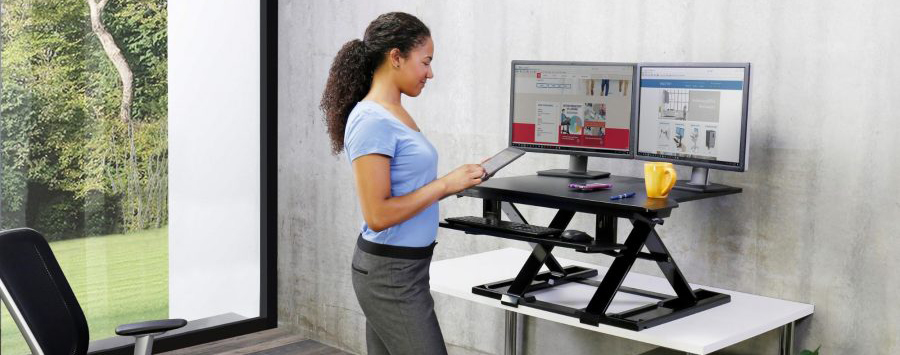
Checklist: How to Tell if Your Workspace Setup is Ergonomic
New ways of working have given way to a new normal for employees in all industries. And many are realizing that once-temporary setups (and habits) need to change to revitalize their workdays. Checking emails on the couch, leading a virtual call hunched over a laptop at the kitchen table, or even working back at your corporate office in a shared workspace can leave you uncomfortable, tired, and uninspired.
No matter where you work, your workspace should fuel a productive workday and even a new sense of energy. Our checklist will help you assess your current setup and identify ways to improve the ergonomics to work more vibrantly.
To regain feel-good energy during your workday, ensure you and your workspace—temporary or permanent—follow this checklist:
√ Your screen height is at eye level.
For the most comfortable viewing, keep your monitor at or slightly below eye level and about arm’s length away. Avoid looking down or up at your screen to help protect your neck.
√ Your feet are flat on the floor.
When your feet rest naturally on the floor, you support your body’s neutral posture. Dangling feet can lead to lower back pain, so if needed, invest in a simple footstool for the extra height.
√ Your chair is adjustable.
Ditch the kitchen chair for an ergonomic chair that offers multiple adjustment points. The right chair height is key to many items on this checklist, and other adjustments can provide a personalized fit that bolsters your overall well-being.
√ Your arms are at a 90-degree angle.
This is another important element of neutral posture. Your elbows should stay close to your core, and your arms should be at a 90-degree angle when working at your computer. Wrists should always stay flat as you type.
√ You use a drop-down keyboard.
Your keyboard height should be roughly the same height as your elbows. That means most work surfaces are too high to be considered ergonomic (especially laptops). Purchase an add-on, back-tilt keyboard tray that sits below your work surface.
√ Your main items are in the primary zone.
Take an inventory of all desk items, including your mouse, printer, notebooks, and files. Keep your most used items closest in your primary zone, followed by less commonly used items in your secondary and tertiary zones. That will help prevent unintended tweaks to your neck and back (and help you stay organized).
Design a Vibrant Workspace
Remote work has directly impacted wellness and engagement. Check out our ergonomic solutions and build an ergonomic workspace that inspires your best work and fuels a collaborative team spirit.
Information used in this article was provided by our partners at Ergotron.
